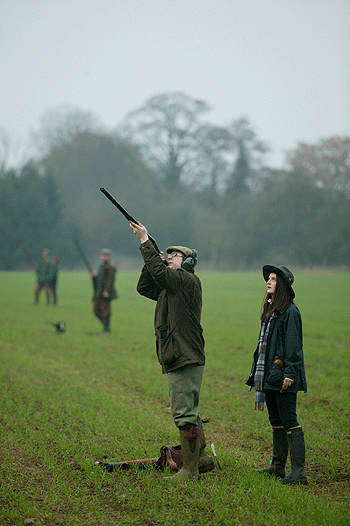Saboteurs: The trials of trespassers

A recent judgement in the Supreme Court involving a demonstration at a beauty products shop in Covent Garden might not seem relevant to the world of shooting, but in fact it has cleared up a long-running legal sore which has direct relevance to shoots. That is because the case involved “aggravated trespass” and a creative defence that had been used before by protesters, including in an infamous case involving seven saboteurs who had targeted the Brindle shoot in Lancashire in 2006.
The sabs were arrested and charged with aggravated trespass under Section 68 of the 1994 Criminal Justice and Public Order Act (CJA). This makes it an offence to trespass on land if the trespasser intimidates others from engaging in lawful activity there; or if he obstructs or disrupts that activity. This description exactly fits that of saboteurs, which is why such extremists were so opposed to its introduction. Until 1994, landowners only had recourse to the civil courts to address “sabotage” of activities which were taking place on private property. After the enactment of the CJA, common law trespass remained a civil offence but trespass “aggravated” by the intention to obstruct or intimidate legal activity became a criminal offence for which the police could arrest protesters.
The police did just that when the law came into force and inevitably protesters charged with aggravated trespass deployed every defence thinkable and appealed to every court in the land.
One theme that recurred in many of these cases was the “lawfulness” of the activity being sabotaged or disrupted. In one famous case an anti-road protester in Newbury claimed he could not have been committing aggravated trespass because the activity of a contractor, who was not wearing protective gloves or a visor while using a chainsaw, was in breach of the 1974 Health and Safety at Work etc Act. The High Court, however, ruled that the “fundamental” activity being disrupted was the clearing of the site, not the use of the chainsaw, and therefore upheld the conviction.
The central objective
In another case, the High Court ruled that hunt saboteurs were guilty of aggravated trespass as, although hunt members had themselves been unintentionally trespassing at one stage, the disruption continued for some time after, during which the hunt was not trespassing. The court added, however, that if the hunt’s “central objective” had been to hunt over land where they were trespassing, the fact that some lawful hunting also took place would not make the activity lawful as a whole.
It was most probably this judgement that inspired the saboteurs in the Brindle shoot case to run the defence they did when the case reached the magistrates’ court in 2008.
They claimed that as the shoot had more than five “employees” (every beater and picker-up is technically an employee) and had no written risk assessment, it was unlawful under health and safety and employment legislation throughout, and so the seven defendants could not be guilty of the offence.
Faced with this creative defence, the Crown Prosecution Service (CPS) took the regrettable decision to fold, offering no more evidence and leaving the court to find the defendants not guilty. This decision did not set any sort of legal precedent, but it did hang heavy over the prospects for similar prosecutions for aggravated trespass. The dark cloud of Brindle has, however, been blown away with the help of two protesters who padlocked themselves to a concrete pipe in a shop called Ahava in Covent Garden. They were protesting because the shop was part of an Israeli manufacturing conglomerate and argued that its activity was “unlawful” because Ahava works in premises in illegally occupied Palestinian land and falsely labels products as coming from “Dead Sea, Israel”.
In the Supreme Court, Lord Hughes gave the argument as a whole short shrift, but in particular was clear that not every offence would render a shop’s activity unlawful for the purposes of aggravated trespass. It was no defence to claim, for example, that a worker at the shop was paid less than the national minimum wage. The criminal offence must be integral to the shop’s core activity rather than collateral to it or remote from it.
Setting a precedent
It would be difficult to think of a more direct comparison to the Brindle case than the one Lord Hughes uses. Of course the shoot should technically have had a health and safety policy, but the fact that it did not was a hundred miles from its core activity which was being disrupted, and the reason that disruption was taking place. This judgement confirms that the CPS was wrong to have dropped the Brindle prosecution, that the court would have been wrong to find the defendants not guilty on the basis of the defence of unlawfulness and, most importantly, sets a clear precedent for the courts to reject such defences in the future.
Saboteurs and protesters are avid followers of legal rulings, and will have watched this case carefully. We can be sure that the message will have gone out that anyone trespassing with the intention to disrupt a shoot will not be able to rely on a minute search of every piece of obscure regulation to defend themselves.








